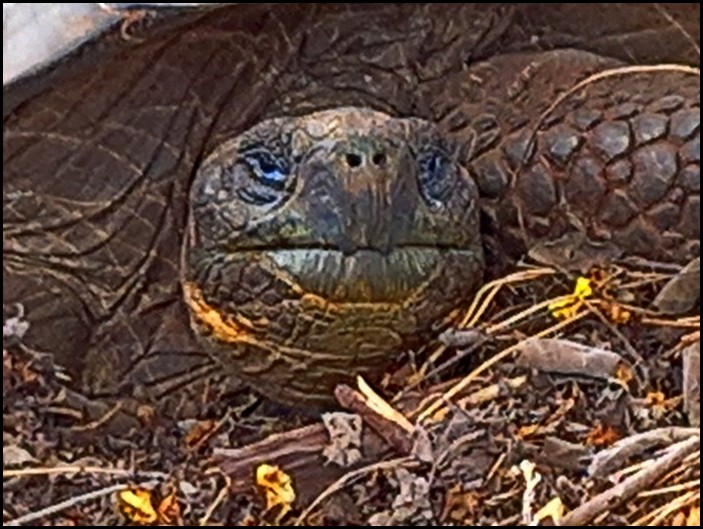
15 Intriguing Facts about Galapagos Giant Tortoises
When it comes to the Galapagos Islands, the impressive Giant Tortoises really steal the show for most visitors to this remote and unique archipelago in the Pacific Ocean.
Truth be told, the Galapagos has many amazing, one-of-a-kind indigenous animals. Galapagos Penquins, Marine Iguanas, Frigates, Blue-Footed Boobies are just a few of the most well-known endemic species found there.
So I’m not sure why the Giant Tortoises are so very very popular. Maybe it’s because we’re accustomed to turtles being really small? Or because humans are extra-intrigued by huge creatures?
In any event, seeing these gentle Giant Tortoises up close, wild in their natural habitat on the Galapagos, is definitely a thrilling moment. I was fortunate to watch these amazing reptiles in several different locations while I was exploring Galapagos for over one month.
Along the way, I also learned many intriguing facts about the tortoises history, anatomy and daily habits. Following are 15 of the most interesting things I found out…
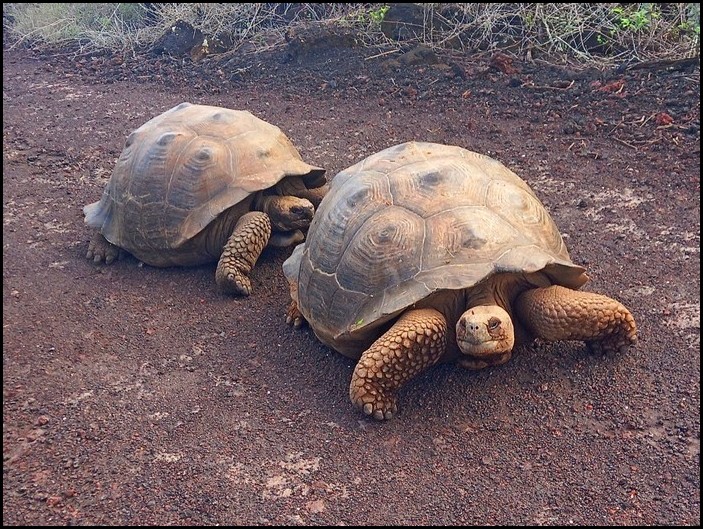
1. Nobody knows how the giant tortoises arrived to the remote Galapagos
The best, most-likely explanation according to scientists is that the tortoises must have arrived from South America. In fact, scientists have determined that the Galapagos Tortoises are descendent from South American tortoises.
But that means the tortoises would have had to float on the Pacific Ocean, since they can’t swim, for at least 1000 km / 600 miles. And that seems unbelievable, even to scientists.
Therefore, the turtles’ means of arrival remains a mystery.
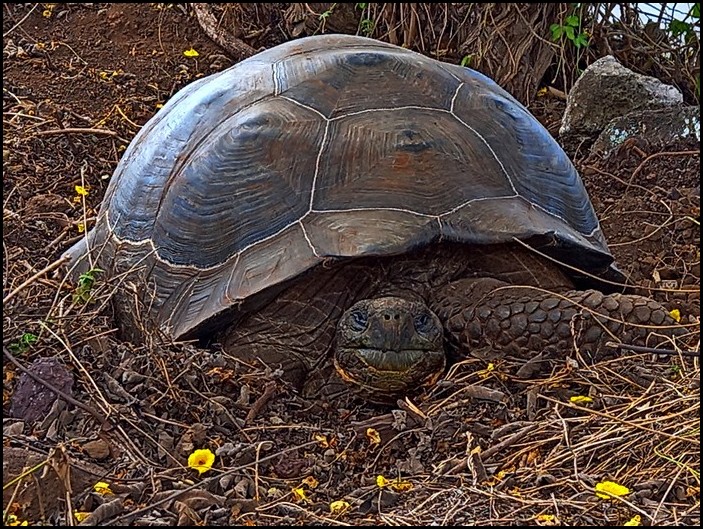
2. The Galapagos Islands are named after the Giant Tortoises
In the mid 1500s, Spanish sailors who discovered the islands and their giant residents named the archipelago The Galapagos. ‘Galapagos’ was a traditional Spanish word for ‘saddle’. In this case, the Spaniards were referring to the shape of the tortoises shells, which looked to them like Spanish riding saddles.

3. Scientists have identified 14 species of Giant Tortoises at Galapagos
Among the dozens of Galapagos Islands, where the various species of tortoises live, 14 different species have been identified. Differences between species include the shape of their shells, length of necks and legs and eating habits/diets. These differences are the result of differences in vegetation and habitat at the various islands.
Today only 10 species exist since 4 species have already gone extinct.
4. Giant tortoises also are endemic to Seychelles Islands in the Indian Ocean
Truth be told, the Galapagos Islands are not the only place on Earth where Giant Tortoises are found. A second natural home is in the remote Seychelles Islands, off the eastern coast of Africa in the Indian Ocean.
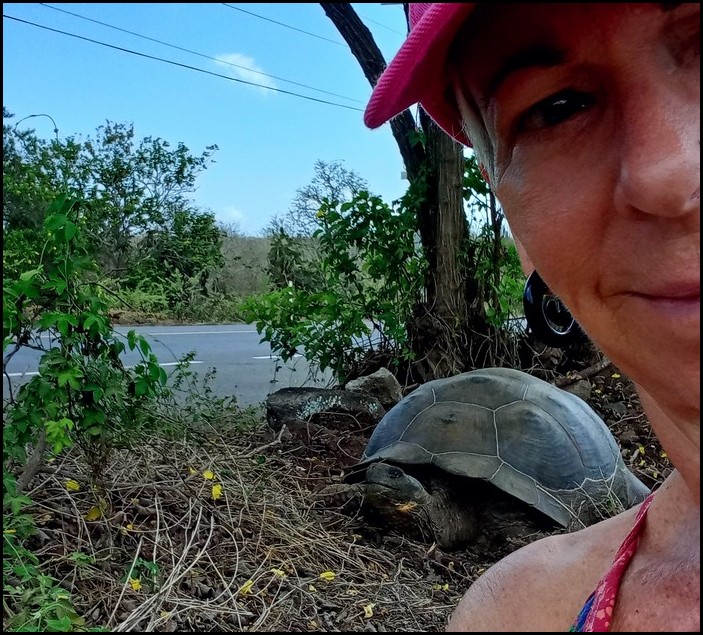
5. Galapagos Tortoises are the largest tortoises in the world
Adult Giant Tortoises are generally about 5 feet long by 5 ft wide. Males weight over 500 lbs, while the smaller females weigh over 250 lbs.
However, there are some even larger Galapagos Tortoises! The largest ever recorded was over 6 ft long and weighed well over 900 lbs.
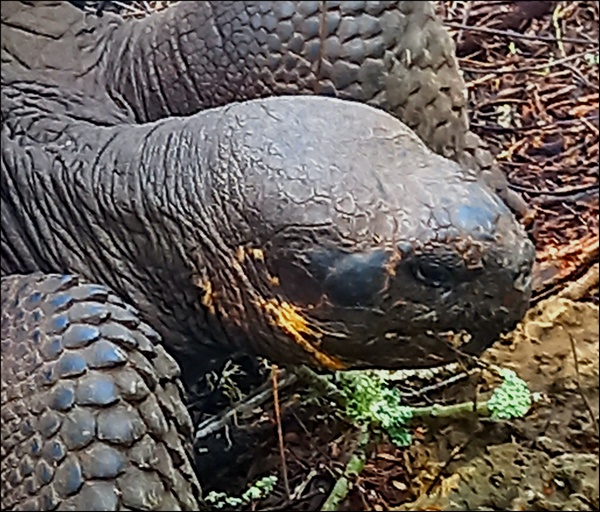
6. Giant Tortoises are vegetarians
These giant reptiles eat grasses, cactus pads, cactus fruits, tiny endemic Manzanillo apples and other greens. Their specific diets vary from island to island, based on what native plants grow there. The specific vegetation available has led to differences in species from island to island, as noted above.
7. Galapagos Tortoises can live for up to one year without any food or water
These giant tortoises have an extremely slow metabolism. Apparently, it can take them up to three weeks to fully digest a single meal!
The tortoises also can store several gallons of water in their bodies, which means they don’t have to drink very often. In fact, they can survive for up to one entire year without eating any food or water!
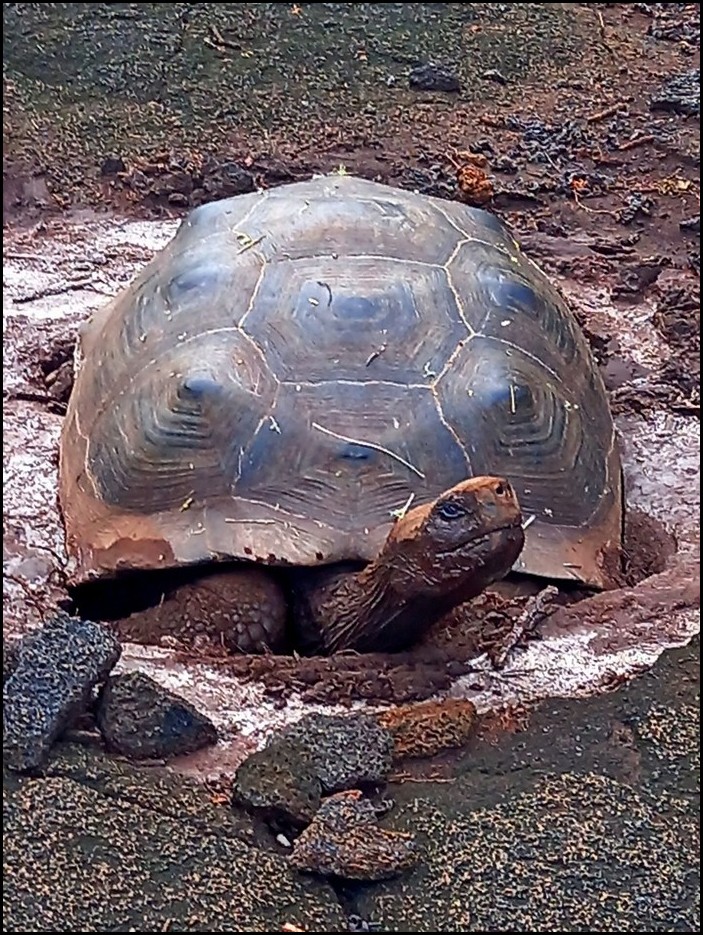
8. Giant Tortoises sleep up to 16 hours per day
Along with their very slow metabolism, Galapagos Tortoises sleep all night and then take naps throughout the day.
9. It’s estimated that giant tortoises can live up to 175 years or more
Another thing nobody knows for certain about the Giant Tortoises is their maximum life span. It’s pretty conclusive that the tortoises can generally live at least 100 years. Several tortoises alive today are estimated to be 100 years old. Scientists estimate they may even live up to 170 years or longer.
The oldest known Galapagos Tortoise lived to be 176 years old. She lived at an Australian zoo and died in 2006. It’s believed that she may have been one of the specimens taken from the Galapagos by Charles Darwin himself in 1835!

10. It’s estimated that there used to be 250,000 giant tortoises in Galapagos
Nobody knows exactly how many Giant Tortoises used to live in the Galapagos at the time of their maximum population. But based on evidence, scientists estimate there were up to 250,000 tortoises at their peak.
A survey in 1980 found only 15,000 tortoises still alive in the Galapagos. That’s less than 10% of the estimated original population.
Guess what happened to them… ?

11. Hundreds of thousands of Galapagos tortoises were carried away and eaten by sailors
After the Galapagos Islands and their giant inhabitants were discovered by Spanish sailors in the 1500s, the giant tortoises encountered their very first predator: man.
Yep, long-distance sailors from the 1500s-1800s, including explorers, whalers and pirates, got the ‘brilliant’ idea to kidnap the beautiful, decades’ old tortoises onto their ships in order to eat them during their long voyages.
Since the tortoises can live for up to one full year without any food or water, they unfortuantely became an easy, inexpensive food source for human sailors.
The very unfortunate reptiles were ravaged by human sailors for over 400 years, and their numbers decimated, before anyone stepped in to start protecting them.
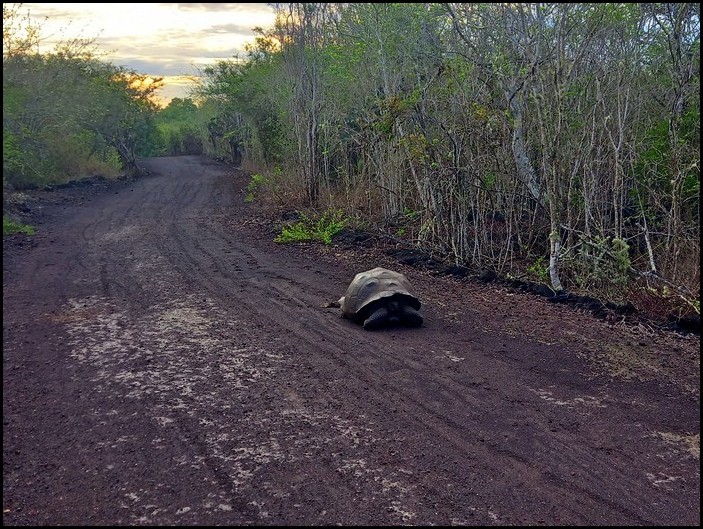
12. Giant Tortoises had no enemies/predators until man
Prior to the arrival of humans, Giant Tortoises in Galapagos had no enemies. They led long, long peaceful lives eating cactus pads and other vegetation, sleeping, wallowing in mud pools and conducting their yearly mating & migration patterns.
As noted above, when humans arrived, sailors carried off and ate hundreds of thousands of the gentle giants.
As if that weren’t bad enough, along with men’s ships came several invasive animals and plants that created further serious problems for the tortoises. Wild dogs, goats, cats and rats became predators. Wild dogs, cats and rats preyed on the tortoises and/or their eggs. Goats ate up much of the tortoises food sources.
Invasive plants, like blackberry bushes, competed with indigenous plants for nutrients,often taking over and thus limiting the tortoises traditional food sources.
Some of these invasive species were intentionally introduced by men, other species were accidental/inadvertent.
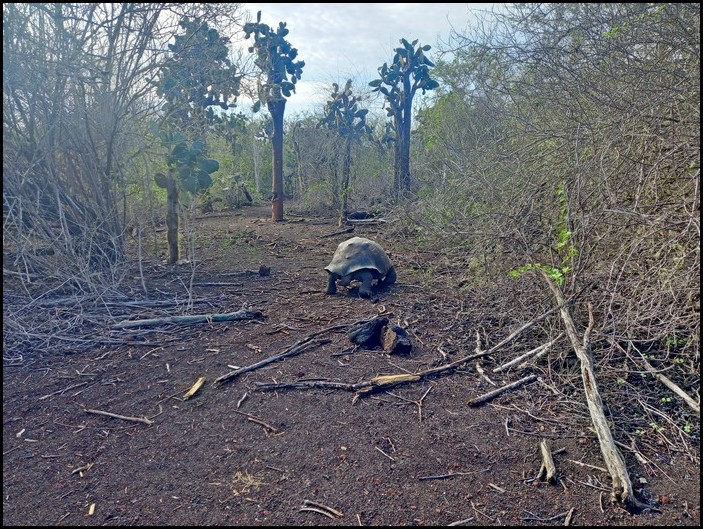
13. Today, only about 15,000 giant tortoises are alive
A poll of the Galapagos Tortoise population gave an estimate of 15,000 individuals still alive in the archipelago. Less than 10% of the original estimated population.
Not surprisingly, the tortoises were listed as endangered. More specifically, the various species are listed as vulnerable to critically endangered.
14. Lonesome George was the last of the species Pinta Tortoises
When scientists found the very last living Pinta Tortoise on Pinta Island in 1971, they moved him to the Darwin Research Center on Santa Cruz Island. The tortoises’ natural food source on Pinta Island had been devastated by feral goats.
By moving George to the research center, they could feed him. They also hoped to find him a mate to help extend the species. They dubbed him ‘Lonesome George’.
Since the scientists could not find another living Pinta Tortoise, they tried mating George with various female tortoises of different Galapagos species over a period of 40 years. Meanwhile, George was one of the center’s most famous attractions for visitors.
In 2008 and 2009, George breeded several times with female tortoises living with him in his habitat. These efforts resulted in three clutches of eggs, which were placed in incubators at the center. Quite unfortunately, all three batches of eggs became unviable.
Trajically, in 2012 Lonesome George died, the very last of his species. He was about 100 years old. He died of natural causes.
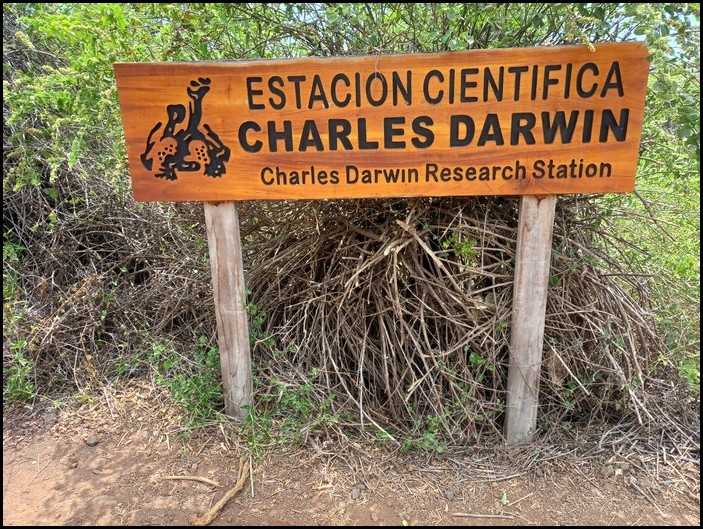
15. Protection, conservation and rescue of Galapagos Tortoises began in 1936
Galapagos Tortoises were officially declared protected by the government of Ecuador way back in 1936. Then in 1959, the entire Galapagos Archipelago was made a national park. It became illegal to capture, remove or kill many species within the park, including the tortoises.
In 1960 the Charles Darwin Center and Galapagos National Park began a series of programs to protect, conserve and rebuild the number of tortoises in the Galapagos.
Conservation efforts are now a joint effort of Galapagos National Park, Charles Darwin Research Center, Fausto Llerena Breeding Center on Santa Cruz Island and Arnaldo Tupiza Breeding Center on Isabela Island. Programs include eradicating dangerous pests such as feral goats and dogs, incubating tortoises eggs, releasing raised young tortoises to their natural habitat on various islands, protecting tortoises from poachers, and educating people about the tortoises and consevation.
The breeding program at Fausto Llerena Breeding Center began in 1965. The Arnaldo Tupiza Breeding Center started up in 1995. They collect tortoise eggs; incubate the eggs in safe, sterile, well-monitored incubators; raise the young tortoises for five years; and then reintroduce juvenile tortoises to the wild.
Over the decades, they’ve raised 9 of the 10 remaining tortoise species. By 2017, they had re-introduced more than 7000 young tortoises back into the wild on Espanola, Santa Cruz, Isabela, Pinzon, San Cristobal and Santiago Islands.
Some successes include: A total of 2000 tortoises released on Espanola Island eventually reached sexual maturity. They’ve been breeding naturally on Espanola since the 1990s. On Pinzon Island, baby tortoises have been born in the wild there for the first time in over 100 years.
As for pest eradication, to date, conservationists at Galapagos have completely removed feral goats, black rats and dogs from several Galapagos islands. This has allowed the natural endemic vegetation to re-generate and to remove dangerous tortoise predators.
One huge success was the final eradication of the black rat on Pinzon Island. Officially declared completely eradicated only in 2014. It was after that, that young center-bred Pinzon tortoises were released to the island. In recent years, the now-wild Pinzon Tortoises successfully hatched healthy baby tortoises in the wild.
=============================
You might also enjoy:
8 Surprising Facts about Ecuador
12 Surprising Facts about the Galapagos Islands
=========================










 Hi! I'm Lash, an American nomadic world traveler who's been traveling solo since 1998. I’m passionate about traveling the world nomadically and then sharing it all with you. I hope to inspire you to travel the world, to entertain you with tales from the road, and to help you reach your travel dreams. Welcome!
Hi! I'm Lash, an American nomadic world traveler who's been traveling solo since 1998. I’m passionate about traveling the world nomadically and then sharing it all with you. I hope to inspire you to travel the world, to entertain you with tales from the road, and to help you reach your travel dreams. Welcome! 




2 pings